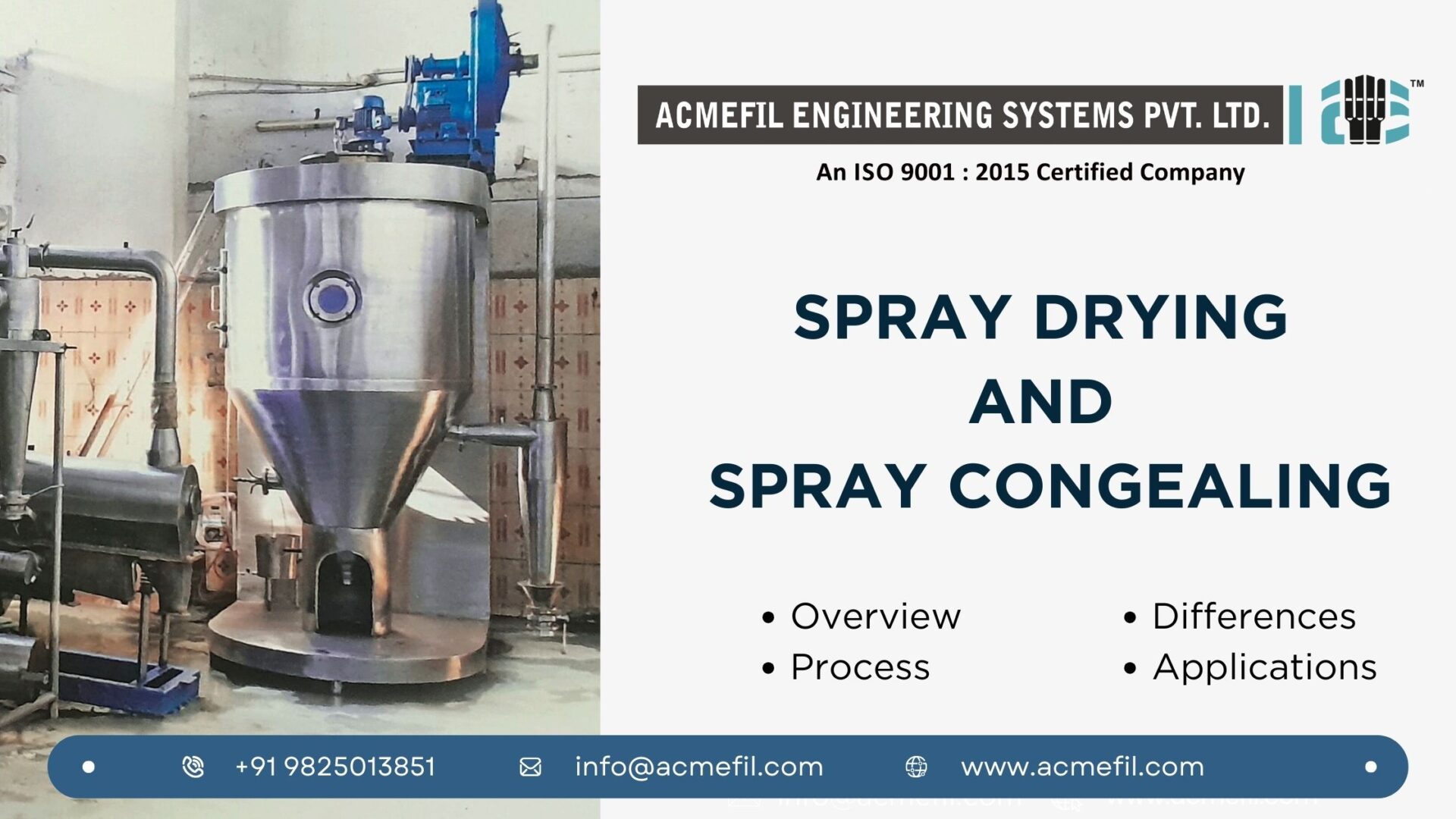Spray drying and spray congealing are essential techniques used in various industries, particularly in pharmaceuticals, food processing, and chemicals. Both methods transform liquid substances into solid forms, but they do so through different mechanisms and for different purposes. In this detailed blog post, you’ll explore the intricacies of spray drying and spray congealing and understand the differences between the two processes.
Spray Drying: An Overview
What is Spray Drying?
Spray drying produces dry powder from a liquid or slurry by rapidly drying it with hot gas. This widely used technique efficiently dries heat-sensitive materials, such as foods and pharmaceuticals.
The Spray Drying Process
- Atomization: You atomize the liquid feed into fine droplets using an atomizer. This can be achieved through various methods such as rotary disks or nozzles.
- Drying: The droplets enter a drying chamber, where they encounter a stream of hot air. The moisture in the droplets evaporates quickly, leaving behind dry particles.
- Separation: You separate the dry particles from the air in a cyclone separator or bag filter.
- Collection: You collect the final dry powder and can further process or package it as needed.
Applications of Spray Drying
Spray drying finds use in various industries, including:
- Food Industry: Producing powdered milk, coffee, tea, and spices.
- Pharmaceutical Industry: Creating dry powder formulations of drugs.
- Chemical Industry: Producing detergents, catalysts, and polymers.
Spray Congealing: An Overview
What is Spray Congealing?
Spray congealing, also known as spray cooling or spray chilling, transforms a melted substance into solid particles by cooling. Unlike spray drying, which involves drying a liquid feed, spray congealing starts with a molten feed.
The Spray Congealing Process
- Melting: You heat the material to be congealed until it becomes molten.
- Atomization: You atomize the molten material into fine droplets using a similar method as spray drying.
- Cooling: The droplets enter a cooling chamber where they solidify upon contact with cold air or an inert gas.
- Separation: You separate the solidified particles from the air.
- Collection: You collect the final solid particles for further processing or packaging.
Applications of Spray Congealing
Spray congealing is commonly used in:
- Pharmaceutical Industry: Producing controlled-release formulations and taste-masked drugs.
- Food Industry: Creating fat-based powders and encapsulating flavors or nutrients.
- Chemical Industry: Manufacturing specialty chemicals and waxes.
Differences Between Spray Drying and Spray Congealing
| Feature | Spray Drying | Spray Congealing |
|---|---|---|
| Feed Material | Liquid or slurry | Molten substance |
| Process Mechanism | Drying the atomized droplets with hot air | Cooling the atomized droplets with cold air or gas |
| End Product | Dry powders | Solid particles |
| Applications | Producing powdered milk, coffee, pharmaceuticals, etc. | Creating controlled-release formulations, fat-based powders, encapsulating flavors |
| Industries | Food, pharmaceutical, chemical | Pharmaceutical, food, chemical |
| Primary Advantage | Suitable for heat-sensitive materials | Ideal for encapsulation and controlled-release |
Conclusion
By understanding the differences between spray drying and spray congealing, you can select the appropriate technique for your specific application. Spray drying is ideal for producing dry powders from liquid feeds, while spray congealing is perfect for solidifying molten substances into controlled particle sizes. Both methods offer unique advantages and are indispensable in various industrial processes. By mastering these techniques, you can optimize your production processes and achieve superior product quality.


